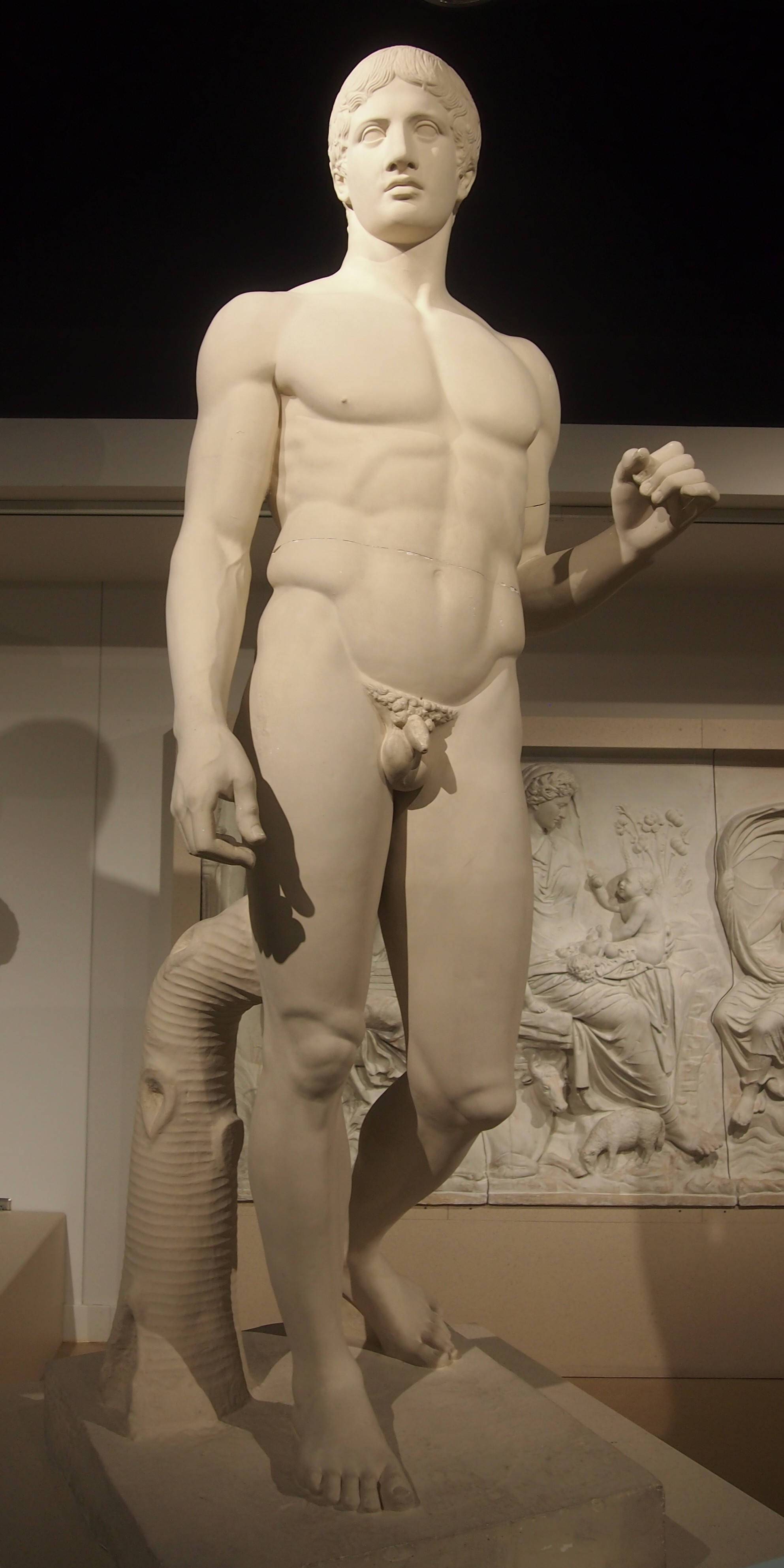Just before bugging out of town on Sunday afternoon, I stopped at the Spurlock Museum on the UIUC campus. I was surprised to find it open. As opposed to the Krannert Art Museum, the focus of the Spurlock — in full the William R. and Clarice V. Spurlock Museum — is ethnographic. I didn’t want to spend a long time, so I only wandered through the first-floor galleries, one dedicated to the ancient Mediterranean, the other to North and South American Indians.
The Mediterranean room offered reproductions of ancient statues and a wide mix of smaller artifacts. It’s always good to run across Augustus, though maybe he should be painted in bright colors.
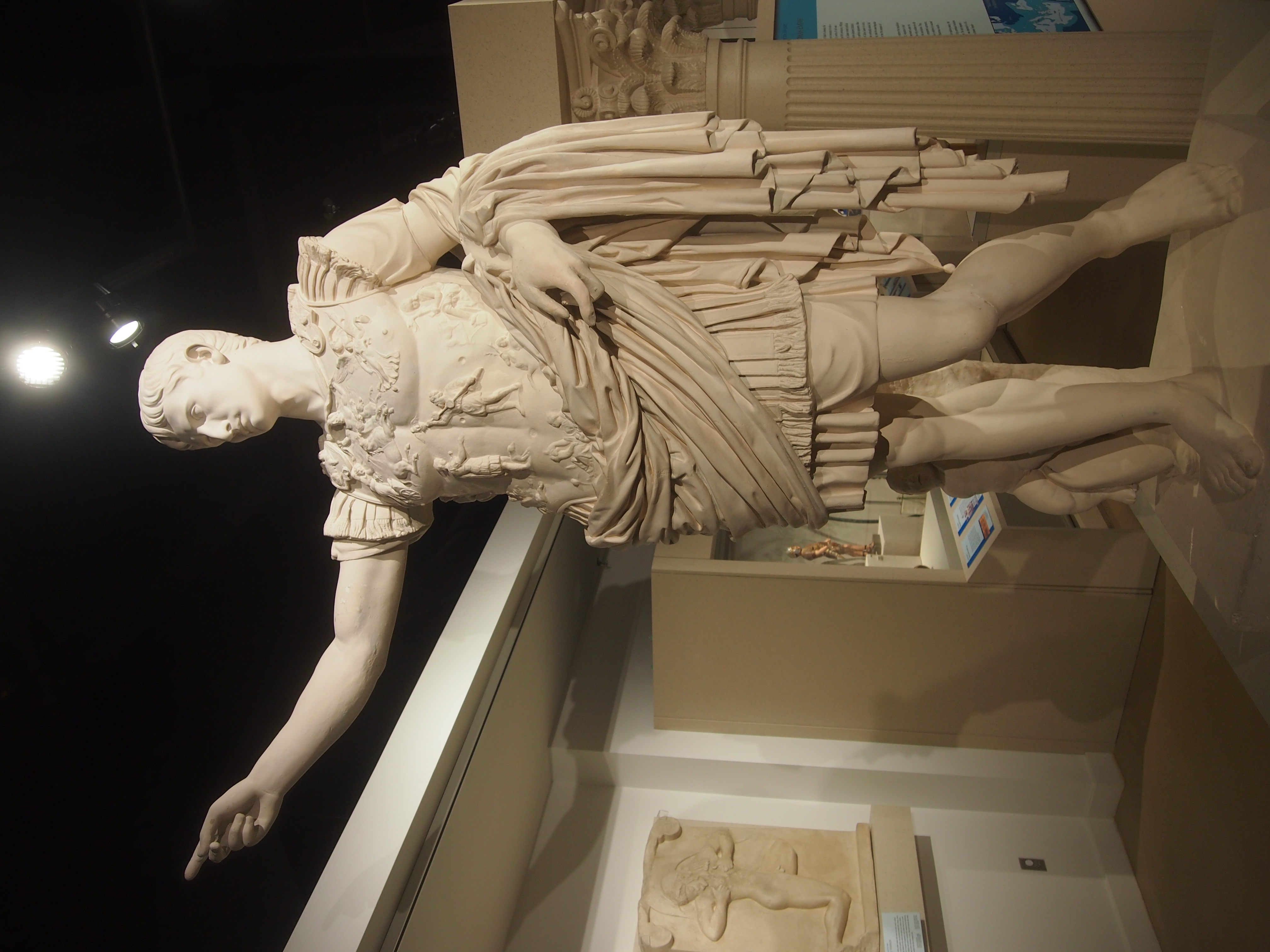 It’s a plaster cast of a first-century Roman marble that’s in the Vatican Museum, which itself was a copy of a Roman bronze original, ca. 20 BC, which was lost to time.
It’s a plaster cast of a first-century Roman marble that’s in the Vatican Museum, which itself was a copy of a Roman bronze original, ca. 20 BC, which was lost to time.
Next, Artemis.
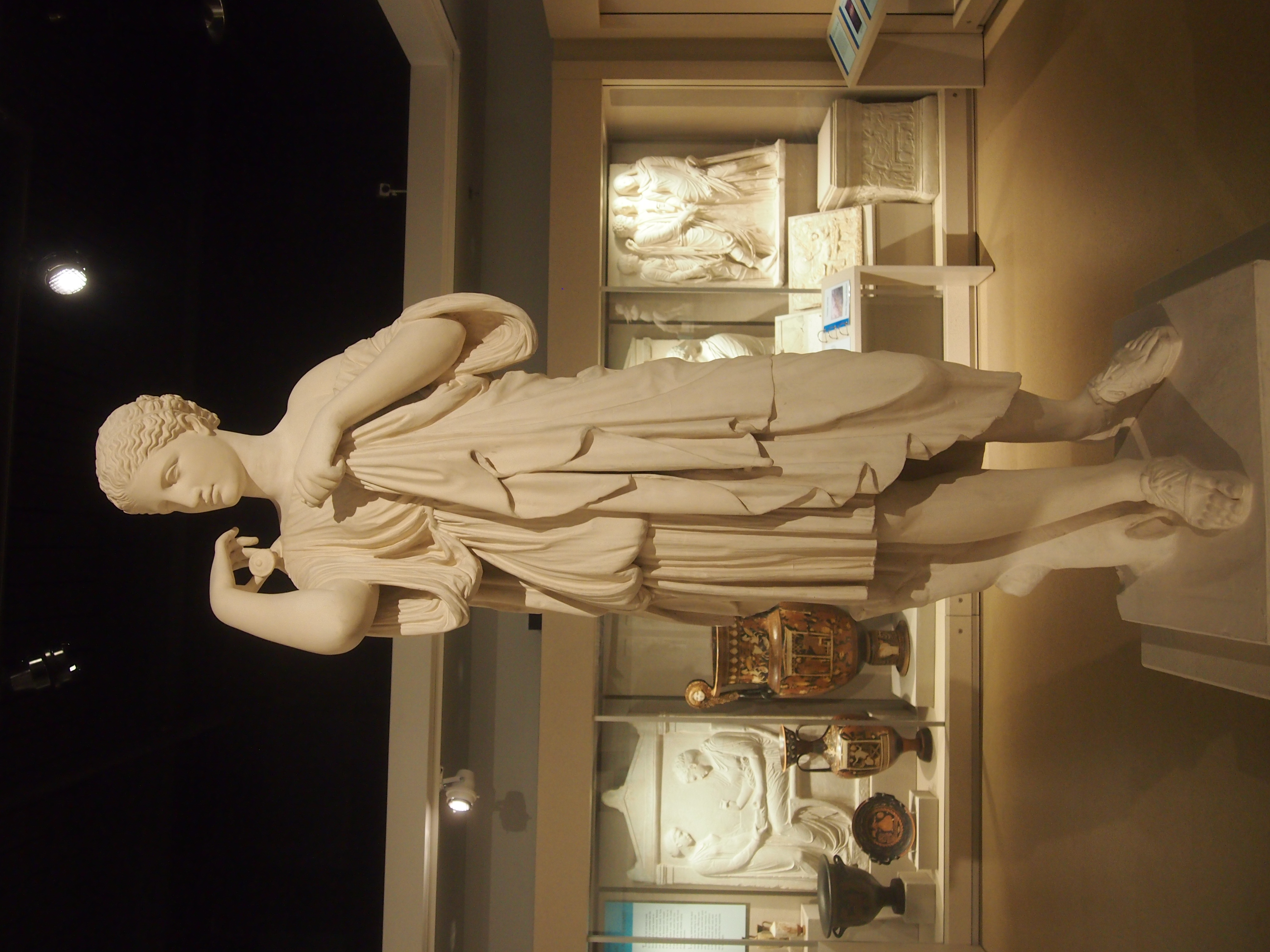 Again a plastic cast of a marble Roman copy, ca. 2nd century AD that’s now in the Louvre. Unlike Augustus, she’s wearing sandals. The original Greek bronze, ca. 350 BC by Praxiteles, is also no more.
Again a plastic cast of a marble Roman copy, ca. 2nd century AD that’s now in the Louvre. Unlike Augustus, she’s wearing sandals. The original Greek bronze, ca. 350 BC by Praxiteles, is also no more.
The Doryphoros.
That is, the spear carrier. No fig leaf for this fellow. No spear, either, though he could pick one up at any time. The original bronze, ca. 450 BC, is lost (of course, sigh). A 1st century AD marble copy is in the National Museum in Naples.
Now for a different aesthetic.
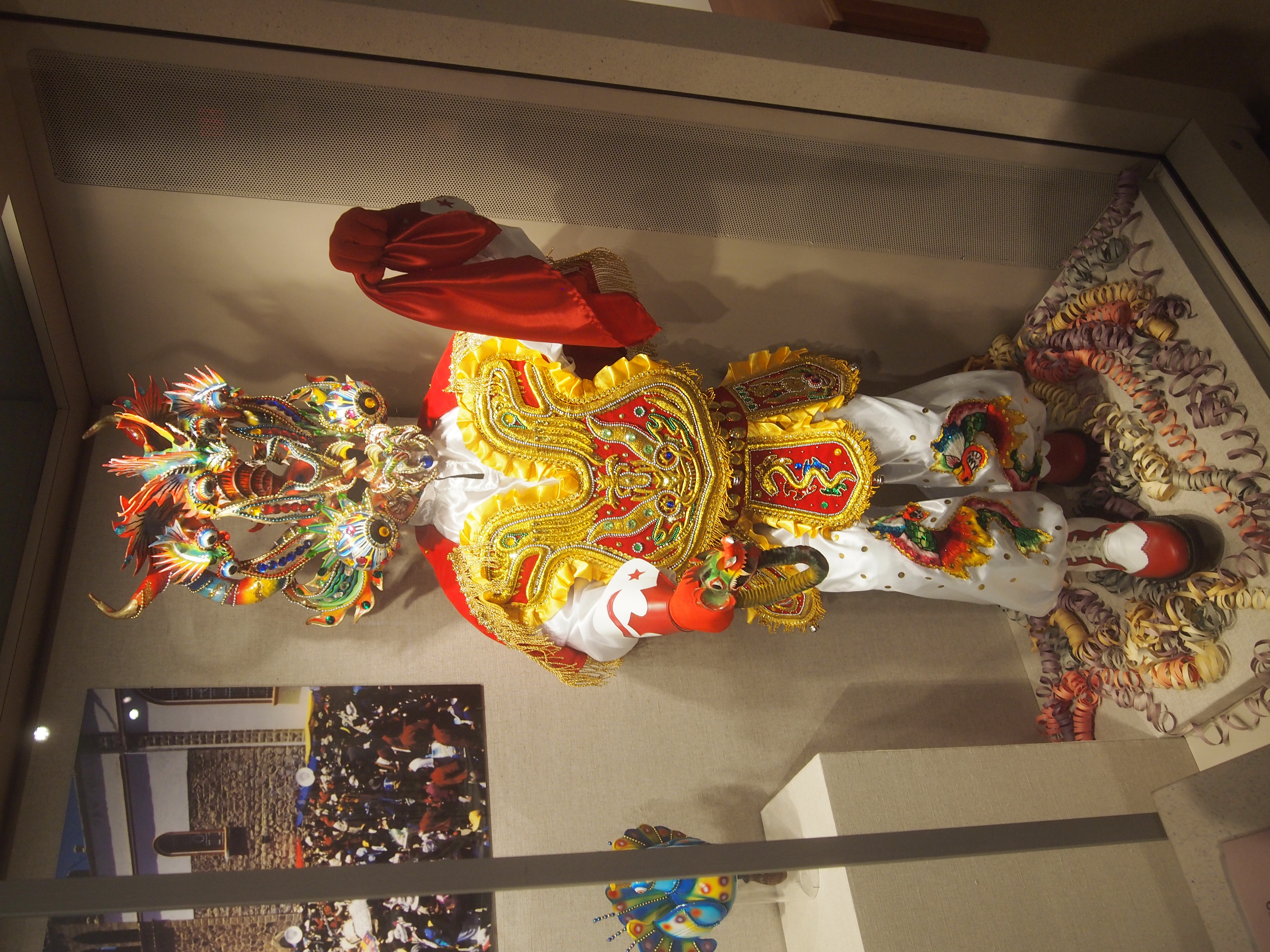 According to the museum, this Diablada costume was acquired by Isabel Scarborough in Cochabamba, Bolivia; the mask, whip and matracas were acquired by Cynthia LeCount Samane in Oruro, Bolivia, in both cases in the late 2000s.
According to the museum, this Diablada costume was acquired by Isabel Scarborough in Cochabamba, Bolivia; the mask, whip and matracas were acquired by Cynthia LeCount Samane in Oruro, Bolivia, in both cases in the late 2000s.
A drum from Andean Ecuador in the 1970s.
Canelos Quichua Miniature Pottery Festival Group, by Marta Vargas Dugua, Puyo, Ecuador (2008).
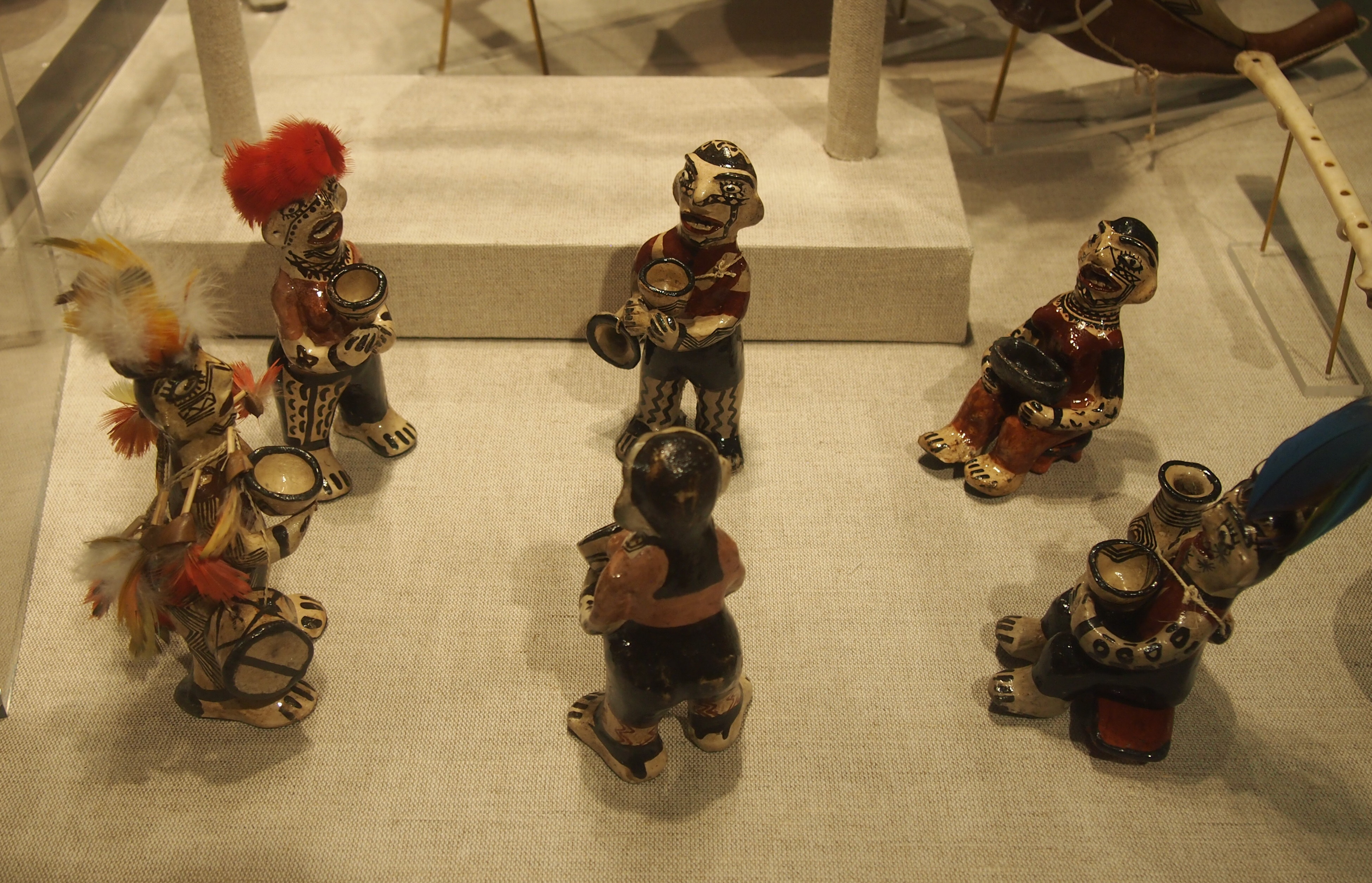 Upstairs are exhibits about East Asia, Southeast Asia, Oceania, Europe, Africa, ancient Mesopotamia, and ancient Egypt. Guess I’ll have to drop by again.
Upstairs are exhibits about East Asia, Southeast Asia, Oceania, Europe, Africa, ancient Mesopotamia, and ancient Egypt. Guess I’ll have to drop by again.
